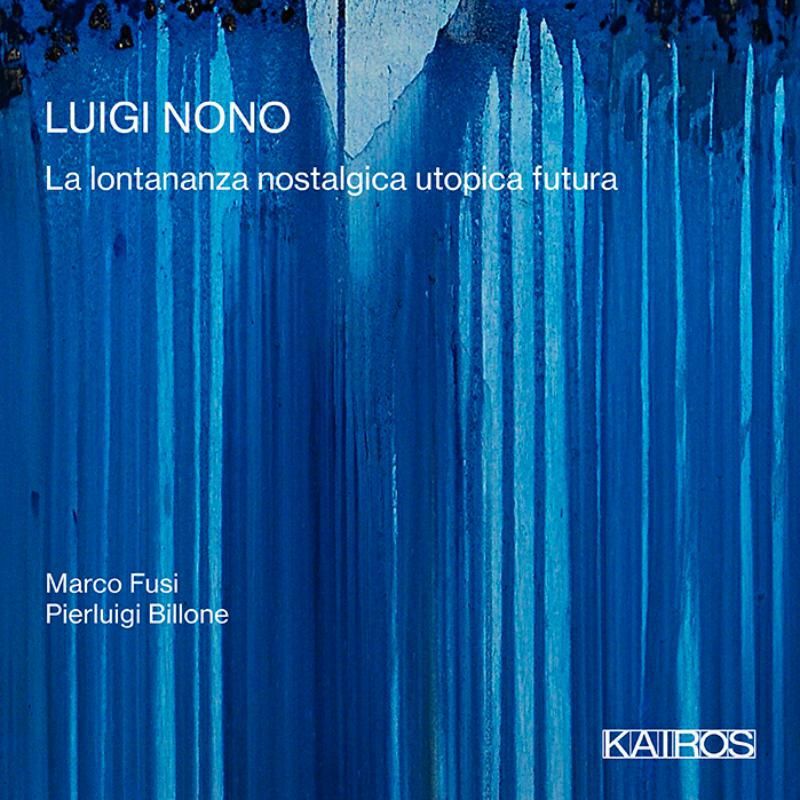NONO La Lontananza Nostalgica Utopica Futura
View record and artist detailsRecord and Artist Details
Composer or Director: Pierluigi Billone
Genre:
Chamber
Label: Kairos
Magazine Review Date: 02/2021
Media Format: CD or Download
Media Runtime: 61
Mastering:
DDD
Catalogue Number: 0015086KAI

Tracks:
| Composition | Artist Credit |
|---|---|
| (La) Lontananza nostalgica utopica futura |
Luigi Nono, Composer
Marco Fusi, Violin Pierluigi Billone, Composer |
Author: Liam Cagney
Nono’s late style brings music to the verge of silence. The dynamic strays above pianissimo only occasionally. Pitch material is less important than instrumental tactility – the noise, say, of the hair scraping the catgut. Through this, we are brought to reside in a microscopic sound world. Brief works like À Pierre for contrabass flute and contrabass clarinet will allow you to dip your toe in Nono’s late style before taking on one of the more forbidding works, such as the monumental La lontananza nostalgica utopica futura.
La lontananza – the English translation is a Marxian mouthful, ‘The Nostalgic Utopian Future Distance’ – was written for Gidon Kremer. An hour long, it is scored for solo violin and a sound projectionist navigating eight channels of pre-recorded violin parts. The soloist walks around six music stands on the stage, enacting the music’s ‘wandering’. The projectionist fades the taped parts in and out, not always necessarily with prior communication with the soloist. Speakers surround the audience, immersing them in sound. Each tape channel has a general character, from densely overlaid harmonic material to high melodic material and fast tremolos. In addition to the violin sounds, two of the channels feature ambient noise (doors opening), human voice (laughter and coughing) and other sonorities.
Marco Fusi and Pierluigi Billone’s new realisation distinguishes itself as perspicuous, spirited and faithful to Nono’s vision. Ahead of their realisation of this haunted quasi-madrigal, Fusi and Billone did exegetical work analysing Nono’s score and tape parts. Billone spectrally decomposed and catalogued the recordings and, through intensive listening, he and Fusi gradually developed their realisation. The first section is characterised by sforzando paroxysms and tenuto long notes. The second section introduces fragmented cantabile. The third section is more meditative.
The dryness and lack of variety can make it hard going at times. Whether or not La lontananza’s post-serialism appeals is something you will probably know in advance, though I will say it is worth taking a punt on regardless, and especially listening to it late at night.
Discover the world's largest classical music catalogue with Presto Music.

Gramophone Digital Club
- Digital Edition
- Digital Archive
- Reviews Database
- Full website access
From £8.75 / month
Subscribe
Gramophone Full Club
- Print Edition
- Digital Edition
- Digital Archive
- Reviews Database
- Full website access
From £11.00 / month
Subscribe
If you are a library, university or other organisation that would be interested in an institutional subscription to Gramophone please click here for further information.




